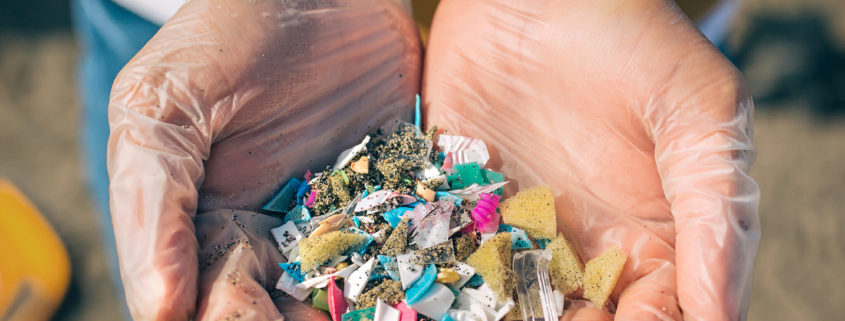In Spring of 2021, California Ocean Science Trust concluded a science convening, on behalf of the Ocean Protection Council (OPC) and in response to state legislation (SB 1263), which tasked the OPC with developing a Statewide Microplastics Strategy. The goal of the Strategy is to increase the state’s understanding of the scale and risk of microplastics on the marine environment and identify proposed solutions to address the impacts of microplastics. The scientific guidance from this working group represents an important component of the Strategy, including a framework to assess risk of microplastic pollution in California and the identification of critical knowledge gaps.

We led a scientific working group to develop a risk assessment framework for microplastic pollution in California
Background
Key Recommendations of the Working Group
- Use a precautionary approach to assess the risk of and manage microplastic pollution risk, based on microplastic persistence, lack of feasible cleanup options, projected rate of increased concentrations in the environment, and evidence that microplastics contaminate and may lead to adverse effects in organisms and humans.
- Manage and assess microplastic pollution risk using a particulate approach, rather than a toxicant approach, until California specific data are available and the chemical effects of microplastics are fully understood.
- Future microplastic risk assessments, using the precautionary framework, should focus on the following high priority & most prevalent components:
- Particle Morphology: microfibers and fragments
- Polymer Types: microfibers and tire & road wear particles
- Fate & Transport Pathways: stormwater runoff (urban, agricultural), aerial deposition, and wastewater
- Sources: unknown in California, but international literature suggests tire & road wear, laundry & textiles, and plastic litter from aquaculture & fishing
- Priority Endpoints: microplastic internalization for benthic mollusks, large crustaceans, and lower and upper trophic level fish
- Apply the risk prioritization tool proposed in this report, which uses a weight-of-evidence approach, to characterize and rank risk associated with the highest priority and most prevalent components of microplastic pollution.
- True source reduction of plastic materials may be the most effective precautionary strategy to reduce and prevent microplastic pollution, given lack of feasible microplastic cleanup strategies.
- The top research need is an inventory of the top sources of macro- and microplastic loading in California that investigates the contribution of agricultural sources relative to urban and industrial runoff, as well as wastewater.
- Given rapidly evolving science, we recommend revisiting this risk assessment framework in five (5) years to assess if effects data (e.g. effects research by SCCWRP & partners) are sufficient to suggest a quantitative effects risk assessment.
Working Group
In collaboration with the Ocean Protection Council, we are bringing together an interdisciplinary group of scientific experts to address this lack of understanding to develop a risk assessment framework for microplastic pollution in California along with scientific guidance to assist the state in understanding the source, fate and transport, toxicological impacts, marine species impacts, and ecosystem and human health impacts of microplastics.
Timeline: May – December 2020.
Working group members
Eunha Hoh, San Diego State University (co-chair)
Susanne Brander, Oregon State University (co-chair)
Kenneth Unice, Cardno Chemrisk (co-chair)
Anna-Marie Cook, U.S. Environmental Protection Agency (retired)
Rusty Holleman, University of California, Davis
Chelsea Rochman, University of Toronto
Julie Thayer, Farallon Institute
Contact
Dominique Kone
Science Officer
dom.kone@oceansciencetrust.org
Additional Resources
Acknowledgements
Funding is provided by the Ocean Protection Council




